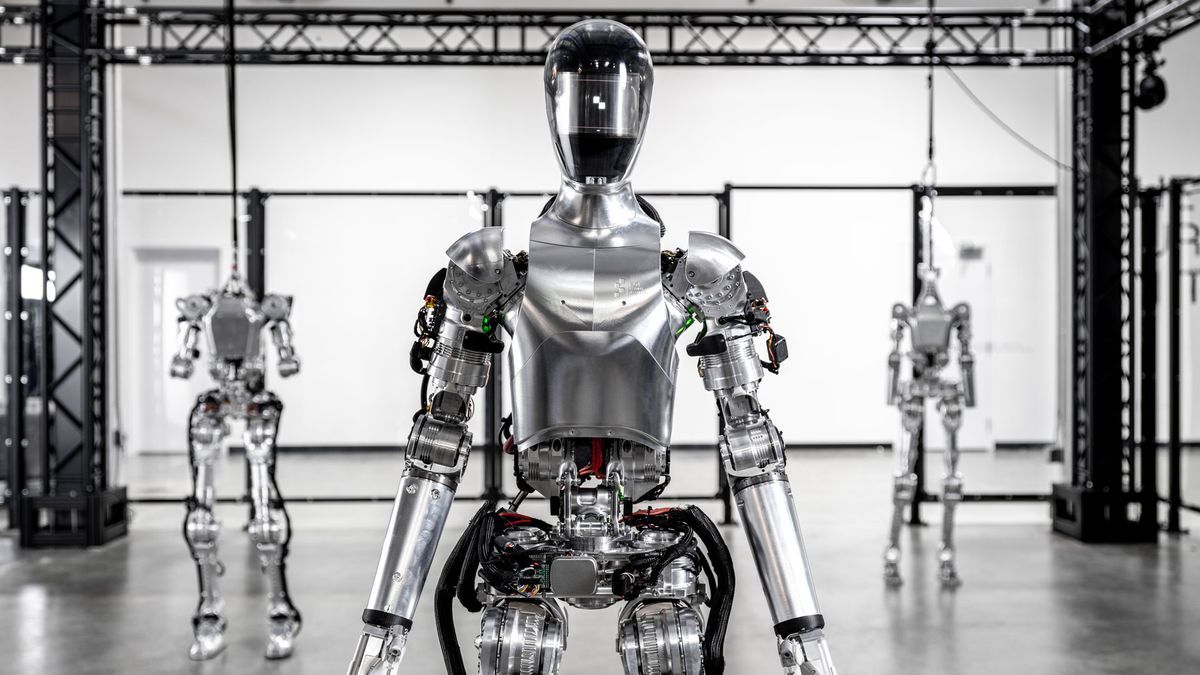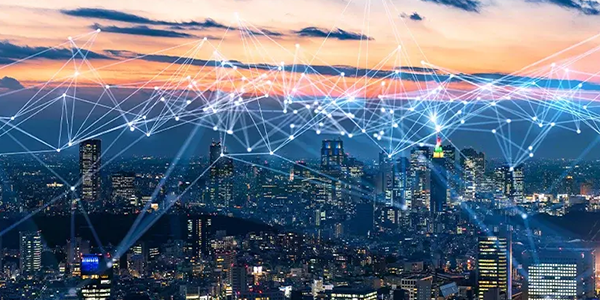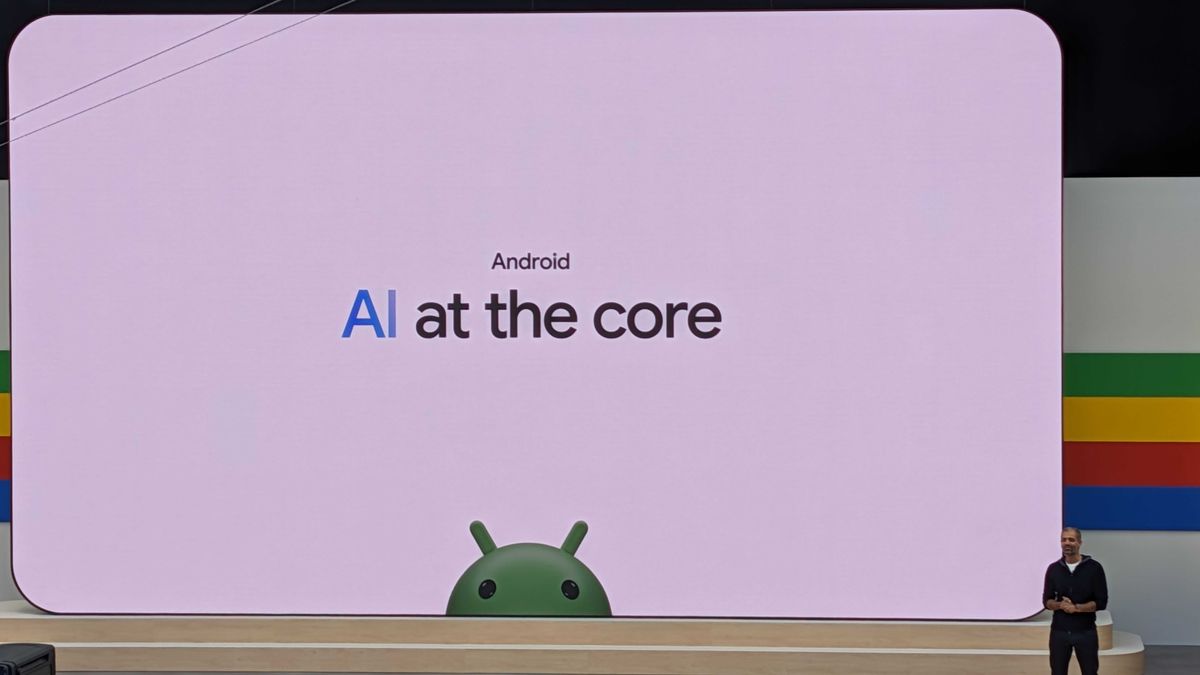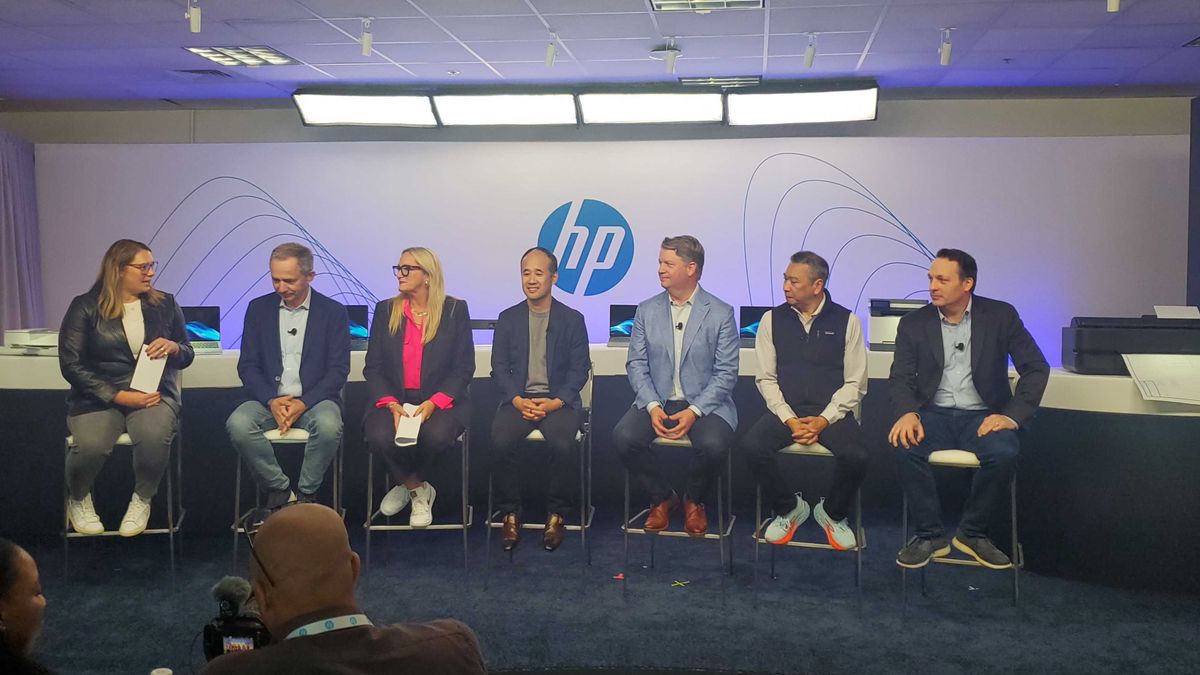If you want a robot to make you a cup of coffee, Figure AI has you covered. In a clever demonstration video, the multi-million dollar new robotics darling showed how its Figure 01 robot could successfully brew a cup of Keurig coffee. It's not impressive, you could do it faster and at least pass the cup to me, but Figure 01's ambition to bring a general-purpose humanoid to life, well, it's worth considering.
If you didn't already know, we're entering a new golden age of humanoid robots, one that was arguably sparked by Boston Dynamics and its athletically gifted Atlas robot and is now fueled by everything from the mysterious Sophia and the chatty Ameca to Tesla's stutter. -step by step Optimus Gen 2.
Figure AI, which this week got funding from Jeff Bezos, OpenAI and Nvidia, mixes a bit of all those robots into a humanoid that would look right at home in Will Smith's 2004 film. YO, Robot.
With the exception of Atlas's parkour abilities, most of these robotics companies seem to be driven by equal parts innovation and hyperbole.
Ameca, which wowed visitors to Mobile World Congress 2024 this week, is the most refined-looking automaton, with a gray, flesh-like, human-like face that can look you in the eye and answer almost any specific question. Ameca can support several generative AI systems like Chat-GPT, but conversations with Ameca are not always what they seem. As the Ameca developers admit in their FAQ:
“If you've talked to one of our robots, you may have enjoyed a great conversation. But you may have been talking to a human through our innovative telepresence software, TinMan. Human intelligence will continue to surpass artificial intelligence , especially when visual cues are important.”
Put another way, sometimes a human acts as a kind of Cyrano de Bergerac for Ameca.
Similarly, Sophia from Hanson Robotics supports some AI chatbot functions, but also supports pre-made responses. On Sophia's homepage, the robot is described like this: “I am a human-created sci-fi character who represents where AI and robotics are headed.”
In the world of real robotics, where recreating human function is painstaking and difficult work, the effort to bring humanoid robotics home is a decades-long process in which, if we're honest, we have yet to reach a middle ground. .
Figure 01, which can walk, carry objects, manipulate coffee machines and even correct its own manipulation errors, is a long way from commercial productization.
From the company's Master Plan: “Our company's journey will take decades and require a champion team dedicated to the mission, billions of dollars invested and engineering innovation to achieve mass market impact. We face high risk and extremely low chances of success.”
The task could be a little faster, especially with the participation of OpenAI. In the statement about the new investments and partnerships, Figuire 01 writes: “The collaboration aims to help accelerate Figure's commercial timeline by enhancing the capabilities of humanoid robots to process and reason from language.”
Still, companies like Figure AI and Tesla are spending millions just to match what Honda previously achieved with ASIMO almost 20 years ago (it abandoned the project in 2018). SO I could walk, run, jump, climb stairs, shake hands and gesture. It had no communication, autonomy, or AI capabilities to speak of.
Boston Dynamics has already shown us what is possible, physically, for semi-humanoid robots. Figure 01 and Tesla are struggling to bridge the gap between their most attractive and amazing creations and Atlas' remarkable athletic abilities.
Figure AI insists that a five-foot, 6-inch, 132-pound multipurpose humanoid robot is the answer to our dreams of robots in the home and in the workforce. But both the industry and the currently successful home robots have proven otherwise. Specifically designed robots where form meets function (looking at you, the best robot vacuums) have until now been the only viable option in the home and factory.
Building robots that look like us assumes that we are the best form factor for each task. What if tasks were created in conjunction with specially designed robots? What would happen if the stove, the refrigerator, and the vacuum cleaner resigned themselves to working with a robot that looked nothing like us but was 100 times smarter and more efficient at any task a human could perform?
When iRobot's Roomba first took off in the early aughts, I asked co-founder and CEO Colin Angle why they weren't making more humanoid robots (iRobot's first product was a baby robot). Angle explained that it made more sense to build robots that did one thing well, especially dirty or dangerous tasks that humans didn't want to do.
When you build a humanoid robot, you have to accommodate all the things that humans can do (walk, run, carry things, talk, navigate, and understand the world around them) and building them for a task is secondary. Most roboticists find that it is tremendously difficult to recreate the complexity of the human body. Angle once told me that viable humanoid robots wouldn't arrive until 2050, a date I still think is overly optimistic.
Figure AI is, by some measures, now a multibillion-dollar company. I wish you luck in your humanoid robot building projects, but I worry that the money will run out long before you complete your decades-long quest.









